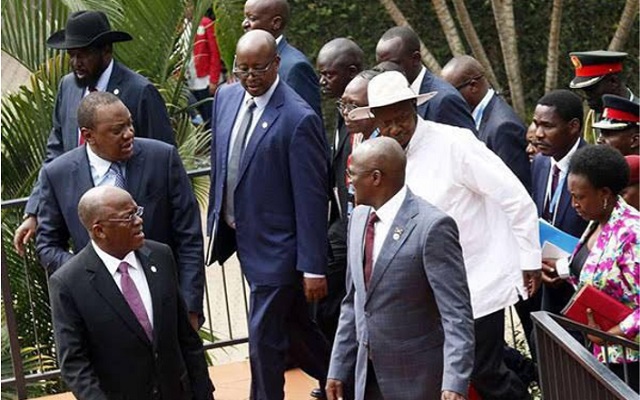
A look at the bloc’s state and DRC’s intention to join
Kampala, Uganda | IAN KATUSIIME | The decision by the Democratic Republic of Congo (DRC) to apply to join the East African Community (EAC) may seem like a coup for the bloc but on closer scrutiny it may compound the problems the EAC is currently facing.
DRC President Felix Tshisekedi wrote to his Rwandan counterpart Paul Kagame, who is the current chairman of the EAC, seeking to join the six member bloc.
With the EAC marking its 20th anniversary in November, it appears like a great way to cap a milestone. But that is until one assesses the baggage that the DRC brings as a mineral rich country with an all too familiar record of the natural resource curse; armed and social conflict, health challenges, and the threat of internal implosion.
Numerous local and foreign militias control most of the eastern part of the country and fights between them for a share of illicit trade in gold, coltan, diamond, and more are common. Currently, DRC is reeling from an Ebola outbreak that has claimed an estimated 1,400 lives and an unstable existence between Tshisekedi and his predecessor; Joseph Kabila looms over it.
The EAC, meanwhile, is also grappling with myriad sets of troubles.
The fragility of the EAC hit a crescendo with a border dispute between Rwanda and Uganda. The sudden halt to the free movement of goods and people violates the EAC Common Market protocol of free movement of goods and people and Rwanda has been firm in denying it closed the border. The Ugandan side, however, insists the reality refutes Rwanda’s denials. Whatever the case, the development is a major step back for the EAC when Rwanda is the current chair.
Slow implementation of bilateral deals
The highly publicised state visit by President Yoweri Museveni to Kenya in March this year where state pacts were hammered out did little to ease the friction on these trade terms and neither did it harmonise the two countries on their disputes on poultry and dairy products, sources say.
Kenya and Uganda have never resolved their work permit tussles, their sugar barons still bicker over sugar quotas.
By many accounts, Uganda’s ban on beef and its by-products from Kenya still lingers and so does Kenya’s restrictions on poultry products from Uganda. The head-butting continues and Gideon Badagawa, the Executive Director of Private Sector Foundation Uganda, the private sector umbrella body, has an explanation.
“It is all about sovereignty,” he tells The Independent. “Most of our partner states are looking to develop on their own. That is what sovereignty is all about.” He states that technocrats will always find reasons to halt goods.
“It is one thing for Presidents to go to Arusha at a summit and another for these decisions to be followed through.”
Badagawa does not like the often stated claim that the EAC is the fastest growing region on the continent. “You always hear that being sung but then tourism is always blocked from Tanzania and food items are always stopped from Kenya,” he says.
He argues that the harmonisation of standards is key for the EAC to thrive saying it is a waste of time for countries in one bloc to subject themselves to other standard checks once they cross borders. “Why should goods be at Malaba for three days before the Kenyan standards authority has to approve them?”
He adds that bureaucracy rides with corruption and some technocrats may delay goods and services with the hope of eating a bribe.
Tanzania and Kenya have had unending and malicious deliberate trade barriers between each other.
On the other hand, Burundi has been plagued by perennial instability while South Sudan has been a powder keg since it joined the EAC in 2016; sort of compelling other member states to keep a keen eye on it.
The other strategic bottleneck that has hit the EAC is the stalling of the Standard Gauge Railway (SGR)- a signature infrastructure project of the bloc supposed to link the vital Mombasa port with the other landlocked states in the community.
Kenyan President Uhuru Kenyatta failed to secure funding from China for the construction of the third phase of the railway in the country and by extension, casting doubt on the part that will go through other member states.
Journalist Charles Onyango Obbo in an article in The East African contextualised the current state of the EAC writing that it has two tiers: “with Kenya, Uganda, Tanzania and Rwanda up in a Premier League, and Burundi and South Sudan, wracked by conflict at the bottom, languishing as basket cases in a Second Division.”
 The Independent Uganda: You get the Truth we Pay the Price
The Independent Uganda: You get the Truth we Pay the Price



